Misrepresenting Colorado Marijuana
David W. Murray
– There is no Colorado “survey;” and no capacity to “represent” Colorado youth.
– The sample represents no more than the kids who participated.
– Media reported youth use “flat,” but steep increases were nonetheless widespread.
– Colorado youth marijuana use cannot be “below the national average.” They have the highest rate of marijuana use in the nation.
– The survey response rate, only 46 percent, was inadequate; crucially, below the threshold set by the Centers for Disease Control.
– The only “lesson” about legalization is a warning sign.
What is wrong with the marijuana legalization debate, and who is responsible for its sorry state? No better example of misdirection can be offered than the results of a recent Colorado poll. Because of the public health stakes for the nation’s youth, getting this right is essential.
The 2015 version of the Healthy Kids Colorado (HKCS) school survey, which polled both middle school and high school students, garnered a tremendous amount of news. Since it is the first state level estimate to be taken after marijuana legalization (accelerated with retail sales in January 2014), there was reporting concerning possible impact, compared to the previous HKCS taken in 2013.
While not without flaws, the study is an interesting snap-shot of youth health concerns, and legitimately alerts us to some genuine problem areas for marijuana use. But the media reporting was appalling, and theHKCS did little to prevent misunderstanding.
Media Advocacy
Uniformly, media described good news for marijuana legalization advocates. Most coverage (in the Washington Post, Denver Post, Fox News) reported that, compared to two years prior, marijuana use was “flat,” because not “statistically significant.”
Yet even a flat outcome is surprising, not least because other national surveys in Colorado have disclosed alarming increases in use for adults and young adults, rates rising in ten years some 99 percent (7.5 percent to 14.93 percent).
Moreover, in the regional breakdown there were major increases since 2013 in past month use for some students who were juniors and seniors, the increase in some regional breakdowns rising between 50 and 90 percent.
But the survey combined those results with younger grades to produce an overall mean (an ill-advised methodology without weightings), so officials were reported to declare no statistically significant change in marijuana prevalence.
Predictably, the results were treated as a report card on legalization, and media seized on the purported lesson – no rising rates, hence, no worries.
There was even more confusion (or worse) by some media. Both Timemagazine and the Scientific American ran articles claiming that the survey had indeed found change, after all. But remarkably, they reported that the new results showed marijuana use had “dipped” from 2013. Of course, in the absence of significance, this claim would be simply wrong. If the non-significant outcome cannot be up, it certainly cannot be down.
There is worse in store. Media thought that calling the changes “not significant” meant that changes were not sufficiently large. But as we shall see, what happened is that the survey did not, methodologically, produce an outcome capable of being statistically significant, as a true weighted probability survey would be. That is a very different matter.
What they seem to have produced is a (partial) census of students, for whom marijuana is variously steeply up or on occasion down, depending on grade and geography. But this survey does not fulfill the necessary criteria for a probability sample.
What National Average?
A further question is, to what are the results being compared? Both theHKCS report itself, and the media, compared the outcome of HKCS 2015 not only to HKCS 2013, but to what they termed the “national average” of youth marijuana use.
According to the reports, 21.2% of Colorado teens were past month marijuana users in 2015. The “national rate” of pot use by youth was reported as higher, at 21.7%.
What is the possible source for deriving that “national average”? There is one genuinely national sample of youth drug use, that from the National Survey on Drug Use and Health (NSDUH) that covers all states. But this cannot be the basis for the claim. In their latest 2014 estimates, NSDUHreported that 7.2 percent of adolescents aged 12 to 17 across the nation used marijuana in the past month — that figure, not 21.7 percent, would be the youth “national average.”
Moreover, the NSDUH specifically declared that Colorado had the nation’s highest rates. Adolescent marijuana use ranged from 4.98 percent in Alabama to 12.56 percent in Colorado.
Worse, the NSDUH showed for youth that from 2009, when medical marijuana took off in Colorado, there has been a stunning rise of 27 percent through 2014 (from 9.91 percent to 12.56 percent). So Colorado youth use rates in the NSDUH are not only higher than the national average, but, after freer access to marijuana, have been steeply climbing.
There is also Monitoring the Future (MTF), a school survey (8th, 10th, an 12th grades) produced by the National Institute on Drug Abuse. In 2014 MTF showed 21.2 percent of students reporting past month marijuana use. But that rate applied only to seniors in their survey, while the HKCS results were supposed to represent all grades. (Rates for 8th graders in the MTF stood at only 6.5 percent.)
Apparently worried about such data contradictions, the Washington Postsought to mitigate concern by pointing out that the HKCS had a very large in-state sample, of 17,000 kids. Says the Post, “That much larger sample could produce a more accurate estimate than the smaller numbers in the federal drug survey.”
But the Post‘s maneuver only magnifies the problems. HKCS is modeled on the Youth Risk Behavioral Survey (YRBS) conducted every two years by the Centers for Disease Control, and the YRBS (which covers most but not every state), also has a sample that estimates a national average.
Critically, however, the YRBS has nowhere near 17,000 youth in each state as their national sample. Their national estimate is based on a total 13,600 responses, for the entire nation; that would average just a few hundred kids per state if evenly distributed. Moreover, the YRBSsurveys youth in 9th through 12th grade. Hence, the YRBS is not really comparable to what happened in Colorado.
for complete article go to Misrepresenting Colorado Marijuana

